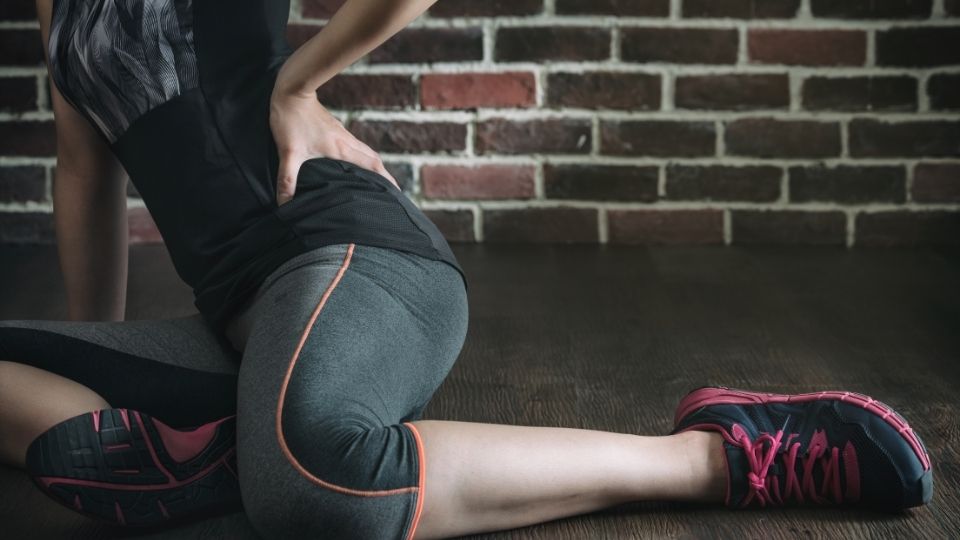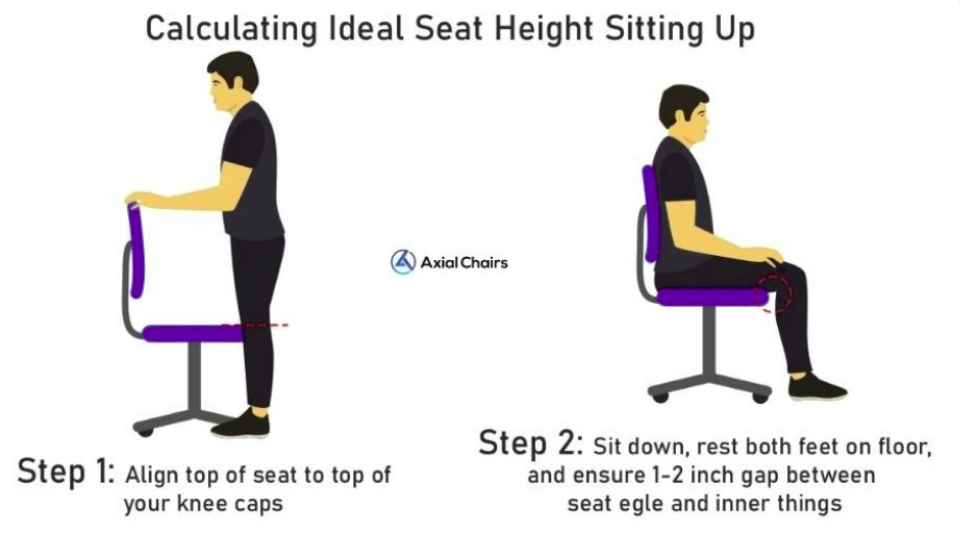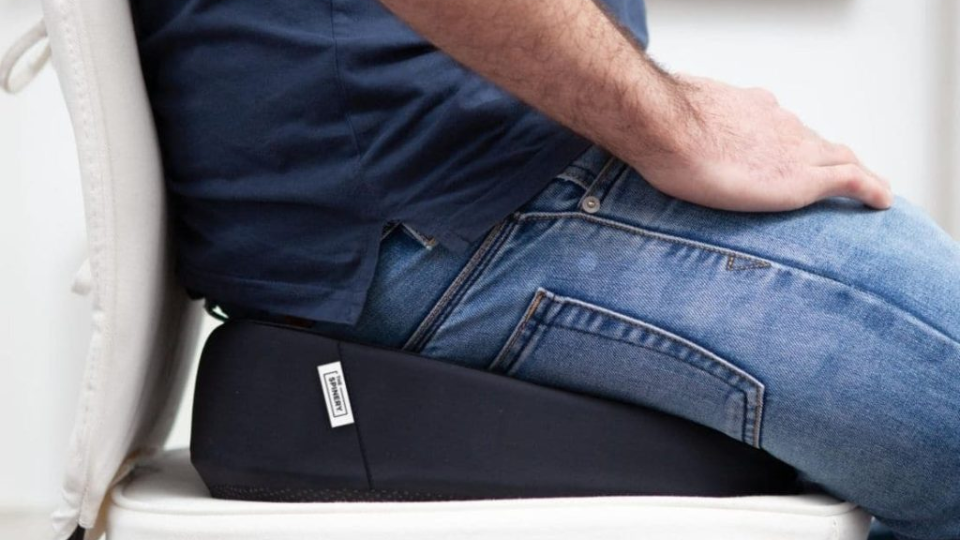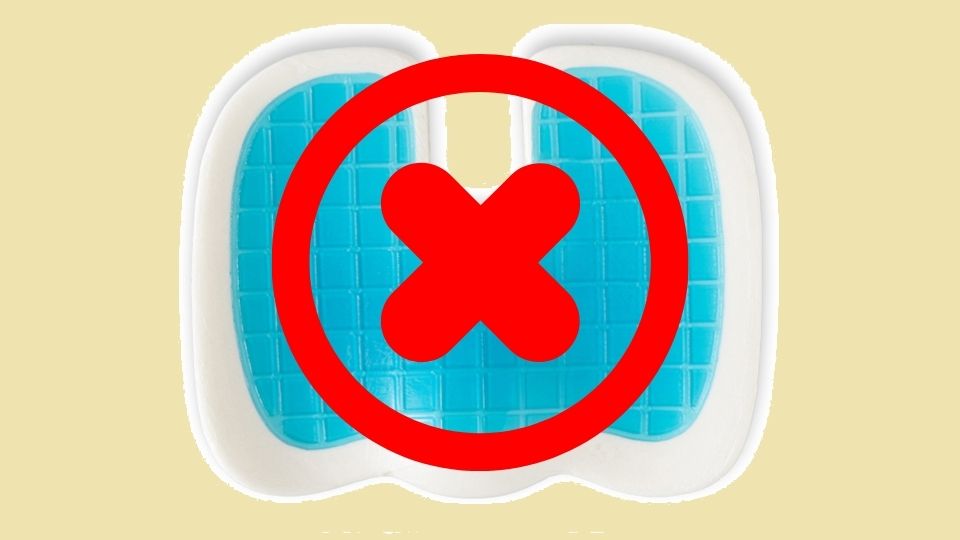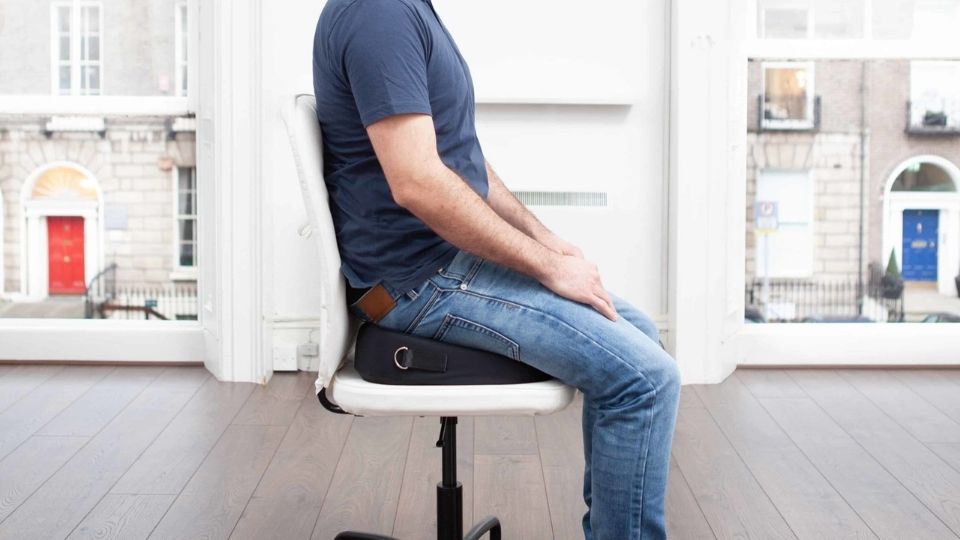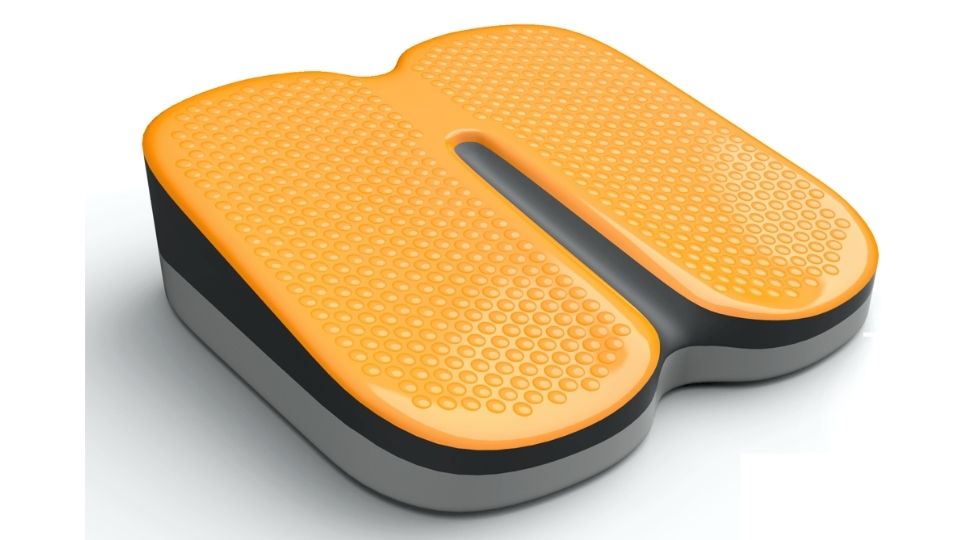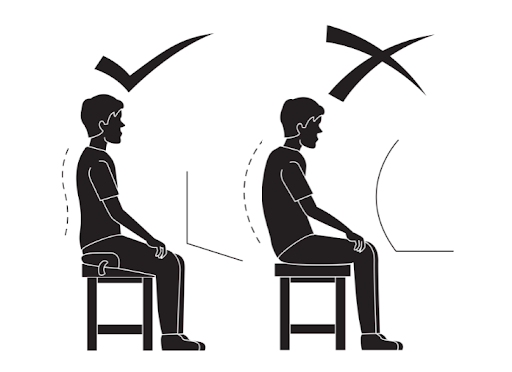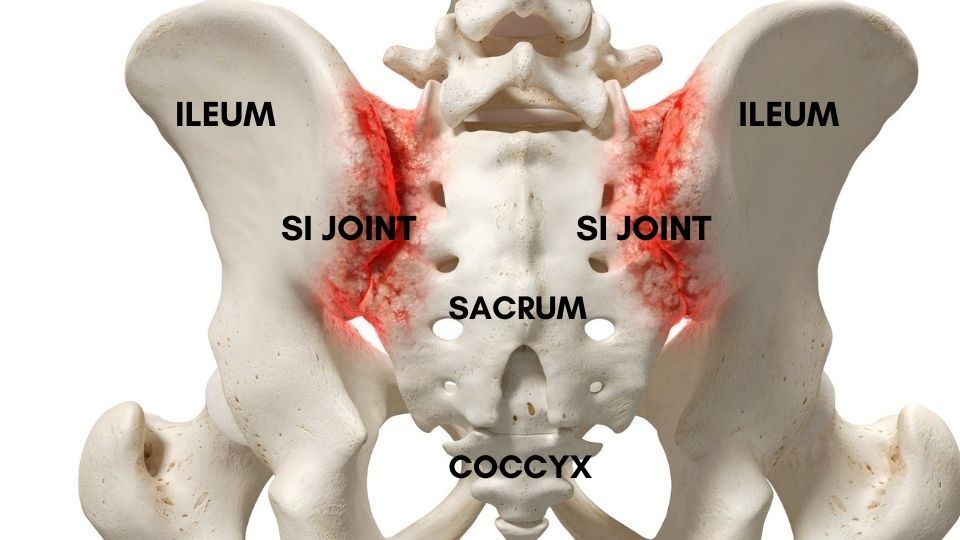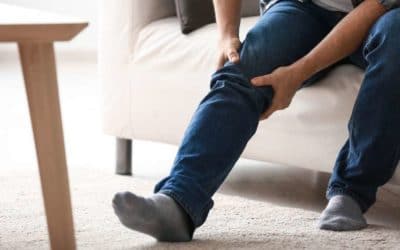Best Sitting Position for Sacroiliac Joint Pain
You’ve never read anything like this before. This is for those frustrated with sacroiliac (SI) joint pain and looking for guidance on how to sit correctly. SI joint pain sufferers can choose from various ergonomic chairs and cushions. In one context, seating that may be beneficial for someone with SI joint pain may not always be appropriate in another.* Simply put, your seat cushion or chair needs to be comfortable!
As a general rule, it is best for someone with SI joint pain (sacroiliac) to sit in a chair with adjustable seat height, a forward tilt, and adjustable seat depth. The foam or mesh fitting density must allow for a certain amount of conformity.
*This is my opinion as a chiropractor and seat designer.
If you’re wondering what the best way to sit is for those suffering from SI Joint Pain, I believe I can help. For over 30 years during that time, I practiced chiropractic as well as trained ergonomist with a published book on posture; I also ran a successful Kickstarter campaign which funded the development of my latest project -a set of ergonomic seat cushions. In this regard, I’m confident that I can offer some helpful insights!
Not only is your back hurting, but now you also have pain in your buttocks, correct? Sacroiliac joint pain is common and can be caused by injury to the part of the spine that connects with the hip. This type of discomfort may mimic other things, such as herniated discs or hip problems, so it’s vital for an accurate diagnosis before determining treatment methods.*
All Day Comfort & Support
Unlike many other joints like your knee or elbow, your SI joint moves very little and is held together with thick ligaments. Sudden injuries or repetitive stress can cause the SI joint to become inflamed and painful. You may feel this pain in your buttocks or lower back. This is when sitting becomes painful.*
Sitting for extended periods can cause pain in your SI joint or aggravate existing pain. However, some positions pose less risk of causing pain than others.* Let me explain what positions you should avoid and what position is best for relieving SI joint pain.
Best Chair for SI Joint Pain
People with poor backs and individually unique needs can find an ergonomic chair to fit their needs by choosing from a wide variety. There is no universal ergonomic chair, so chairs should be designed with human factors. In one context, what may be advantageous for a bad back may be unacceptable in another.* In other words, you need to have a comfortable chair!
I wrote a ‘hands-on’ article explaining the unknown pros and cons of kneeling chairs HERE.
Black Friday: 35% Off Today
Typical Delivery 1-3 Days
4 Factors Your Office Chair Must Have for SI Joint Relief
Adjustable Seat Height
It’s essential to find a seat height that feels comfortable. Keeping your feet flat on the ground is always a good idea when placing your chair at the highest possible level. Adjusting your seat control will allow you to make this change. As the gas cylinder in the chair is adjustable, the seat rises and falls with it. When you sit in them, they compress the air, then release it when you stand up. Chairs usually have a lever for controlling them.
Choosing the right ergonomic chair requires considering the chair’s gas cylinder, an integral component. The suitable gas cylinder installation can be customized for your body shape and height.
Forward Seat Tilt
An ergonomic office chair with a forward tilt may aid in promoting good posture and improving blood circulation in the legs and feet. This chair design can also encourage an upright posture which may lead to reduced back pain. An ergonomic seat wedge with more thickness towards the back may also be used to encourage an upright posture.
Seat Pan Depth
Based on my clinical experience, I have found that adjusting the seat pan depth on an ergonomic chair is one of the most beneficial adjustments for helping you with a bad back. The surface area plays a crucial role in providing comfort.
Short seat depths may aggravate SI joint pain. Insufficient blood flow in your legs and feet may result from an excessively long seat.
All Day Comfort & Support
Seating depth: how to get it right:
- Ensure that your backrest is firmly placed against your back.
- Three to five centimeters should separate the edge of your seat from your knees.
Lumbar Support
Based on the width of the seat, lumbar support should be placed around the L3/L4 vertebrae of the backrest.
If placed too high, an incorrectly fitted lumbar support can exacerbate the spine curve (lordosis). In the case of low lumbar support, the spine may be overloaded, resulting in back pain.
I was surprised how similar cheap memory foam seat cushions with FAKE REVIEWS were on Aliexpress from the listing on Amazon!
Black Friday: 35% Off Today
Typical Delivery 1-3 Days
It does not matter what resistance the lumbar support provides since the difference in people’s preferences for lumbar support in a seated position is likely to be minimal. Lumbar supports are available in various designs.
You can use a rolled-up towel or a small cushion if you don’t have lumbar support. Put your creativity to good use in this situation.
How to Sit With SI Joint Pain
Every day in my private practice, people ask me how to sit when they have SI joint pain. My patients hear this from me:
- Make sure you sit in the correct position (as described above). Set your seat height, depth, forward tilt, and lumbar support for maximum comfort.
- Whenever possible, stand up. Try to get up every 15 minutes.
- Schedule stretches into your day. Keeping moving here is the most important thing. A good posture is one that moves! I tell my patients the same thing all the time.
- If you’re having trouble sitting, place something at the curve of your back (such as a towel rolled up).
- The feet should remain flat on the floor with hips above the knees. Your feet should be just slightly in front or directly under your knees.
- Last but not least, keep your legs at least shoulder-width apart. You can compare this to a sumo wrestler.
Why is SI Joint Pain Getting Worse When You Sit?
The most common cause of SI joint problems is sitting with bad posture.* Sitting with the shoulders hunched down or slouched can strain the SI joints. Additionally, your spinal discs are filled with fluid, preventing the vertebrae from rubbing together. The condition may exacerbate the effects of osteoarthritis (DJD) on back pain.
Choosing an Office Chair Cushion for SI Joint Pain
If you are into super easy and inexpensive alternatives to office chairs, I wrote a fantastic article on how and why you should consider these options for back pain, and I encourage you to read it!
I will begin by discussing cushion types I do not recommend. The types of foam include memory foam, polyurethane foam, and Gel foam. There are several reasons for this:
Memory Foam Office Chair Cushions for SI Joint Pain
Memory foam may not be the best choice for a seating cushion for several reasons:
- Response time is too slow. It’s less painful to experience back pain when you use a responsive cushion. Response time and degree of responsiveness are among the characteristics of foam. Memory foam is ineffective for SI joint pain due to its inherent inflexibility.
- Heat-retaining. Those who sit on memory foam may find it uncomfortable as it retains heat.
- Chemicals! Polyurethane is a chemical produced from the refining of crude oil. Memory foams have PVC, antimony trioxide, polyurethane, and formaldehyde.
- Fire retardants are overused.
Gel Foam Office Chair Cushions for SI Joint Pain
Gel Cushions. Gel cushions are composed of polymer and can be flat or contoured. As they do not flow or move like liquid gels, they will not be damaged if their plastic container ruptures.
Gel slabs sold on the market do not flow like liquid gels and do not absorb shocks or reduce pressure.
Testing hundreds of gel cushions on our patients didn’t provide much comfort or pressure point relief. We found this prototype to be our least comfortable (-90%). Gel cushions in the honeycomb shape never seemed pleasant for any of our clients!
The Best SI Joint Pain Cushions
I explain the concept of ergonomic seat cushions on a national TV show HERE!
I have determined that natural latex is the best choice for seating materials. Reasons include:
- Natural latex is able to align the spine and ease pressure points.
- It is resilient and bounces back with your weight.
- It is versatile and customizable.
- It is made from natural materials and is chemical-free.
- It promotes good air circulation.
- It has anti-microbial properties.
How Do Sitting Wedges Work for SI Joint Pain?
Using a wedge cushion while sitting may align the torso with the upper legs and improve the spinal curve. It can also promote an upright posture, reducing stress on joints, discs, and ligaments.
The seat angle can be adjusted between 8 and 13 degrees. It may be beneficial to start with shorter sitting periods and gradually increase the time as you become more comfortable. Sitting on a wedge cushion can also remove pressure from the coccyx area and provide a comfortable seating experience.
Why Should You Use a Sitting Wedge for SI Joint Pain?
When you hunch over your desks, it can put pressure on your SI joints and cause you to feel pain. Luckily, orthopedic sitting wedges may help prevent this kind of posture with added support!
Benefits of Sitting Wedge Cushions:
-
- May provide SI joint support and comfort
- May promote better posture
- Can engage core muscles
- May relieve back pain or sciatica
- May provide relief for coccyx pain.
How Should You Use a Core Muscle Wedge for SI Joint Pain?
A chair wedge can help with sitting up straight and comfortably. It can be placed on the front of a chair and used by placing the feet firmly on its slope, with the feet pointing away from the back of the seat, also known as “sitting in reverse.” This positioning allows gravity to aid in maintaining an upright posture.
My Recommendations:
Your wedge cushion must have the following:
- Must have a slope of 8-13 degrees
- A high-quality foundation foam support base (+96 kg/m3)
- Top comfort layer (56-68kg/m3)
- Natural Latex provides the best level of comfort, resilience, and alignment
- 4D stretch cover
- Non-skid bottom cover
Can Yoga or Pilates Help SI Joint Pain?
It depends. When Covid went down, many people turned to online yoga and Pilates instruction by watching videos on Youtube. The best approach to treating SI joint pain seems to be exercise, right? Have you noticed that most exercises aggravate your pain? Another way to think about it would be if your front end were out of alignment, would you drive it more challenging and faster? That’s not the case. As a result, the damage will likely develop, and more significant problems may arise.
When you have SI joint pain, you should do whatever it takes to eliminate the cause. When back patients present with SI joint pain, I have seen too many Youtube physicians, trainers, or therapists simply instruct them to do some exercises in the office.
Consider your structure before you seek treatment for your back pain. Perhaps you are experiencing back pain due to lifestyle changes, posture issues, etc. It’s more precise to say that these pains result from abnormal movement patterns and motor control. Today, many people have intolerant backs from flexion (bending forward). Using a seat cushion can prevent that from happening.
I’ve written a complete hands-on review about the Best Seat Cushion for Pregnancy, and here are some of the shocking issues I ran into in this post!
When you sit hunched forward or bend over, you may exacerbate your pain and hinder the healing of your tissues. Therefore, it is also essential to figure out your specific pain triggers and avoid them to fully recover your muscles, joints, and discs.
An ideal pelvic region can only be achieved when the entire musculature, including the anterior chain (front) and posterior chain (back) muscles, is strengthened in a balanced manner. Concentrating on a single muscle is usually not beneficial since it creates patterns that result in less stability. It is essential to consider this point when discussing the best back pain office chair cushion later.
Many forms of therapy aim to stretch muscles and increase the range of motion in the SI joints. This is a downside: people with too much flexibility in their back are more likely to encounter future back problems. Here’s why:
The sacrum is shaped like an arrowhead. Powerful ligaments hold the sacrum rigidly to your ileum at the bottom of your spinal column. As thick rubber bands, these ligaments keep everything in place.
Yoga and Pilates SI joint stretches may stretch and loosen these ligaments, but if you sit at your desk for many hours, your sacrum (arrowhead) may move downward, causing mechanical back pain.
Back pain patients, for example, tend to overuse and use their backs incorrectly more often. People who sit, stand, or move incorrectly increase their backloads, resulting in pain. They may have more motion and strength in their backs and SI joints but less motion and load in their hips (ball and socket joints). It is essential to keep in mind this point when thinking about the most suitable exercises for your pain triggers.
Conclusion
We know that sitting is one of the most common positions people experience pain, especially those who suffer from SI joint problems. Choosing a chair or cushion can be difficult if you are unsure what to look for, and this blog post has given some great advice on best sitting with sacroiliac joint pain. If you want more information about ergonomic chairs.
Sources:
- DonTigny, R.L., 1985. Function and pathomechanics of the sacroiliac joint: a review. Physical Therapy, 65(1), pp.35-44.
- Sieper, J., Rudwaleit, M., Baraliakos, X., Brandt, J., Braun, J., Burgos-Vargas, R., Dougados, M., Hermann, K.G., Landewé, R., Maksymowych, W. and Van Der Heijde, D., 2009. The Assessment of SpondyloArthritis international Society (ASAS) handbook: a guide to assess spondyloarthritis. Annals of the rheumatic diseases, 68(Suppl 2), pp.ii1-ii44.
- Seven, S., Østergaard, M., Morsel‐Carlsen, L., Sørensen, I.J., Bonde, B., Thamsborg, G., Lykkegaard, J.J., Hendricks, O., Jørgensen, N.R. and Pedersen, S.J., 2019. Magnetic Resonance Imaging of Lesions in the Sacroiliac Joints for Differentiation of Patients With Axial Spondyloarthritis From Control Subjects With or Without Pelvic or Buttock Pain: A Prospective, Cross‐Sectional Study of 204 Participants. Arthritis & Rheumatology, 71(12), pp.2034-2046.
- O’shea, F.D., Boyle, E., Salonen, D.C., Ammendolia, C., Peterson, C., Hsu, W. and Inman, R.D., 2010. Inflammatory and degenerative sacroiliac joint disease in a primary back pain cohort. Arthritis care & research, 62(4), pp.447-454.
- Cohen, S.P., 2005. Sacroiliac joint pain: a comprehensive review of anatomy, diagnosis, and treatment. Anesthesia & Analgesia, 101(5), pp.1440-1453.
- Szadek, K.M., van der Wurff, P., van Tulder, M.W., Zuurmond, W.W. and Perez, R.S., 2009. Diagnostic validity of criteria for sacroiliac joint pain: a systematic review. The Journal of pain, 10(4), pp.354-368.
- Snijders, C.J., Vleeming, A. and Stoeckart, R., 1993. Transfer of lumbosacral load to iliac bones and legs: Part 1: Biomechanics of self-bracing of the sacroiliac joints and its significance for treatment and exercise. Clinical biomechanics, 8(6), pp.285-294.


